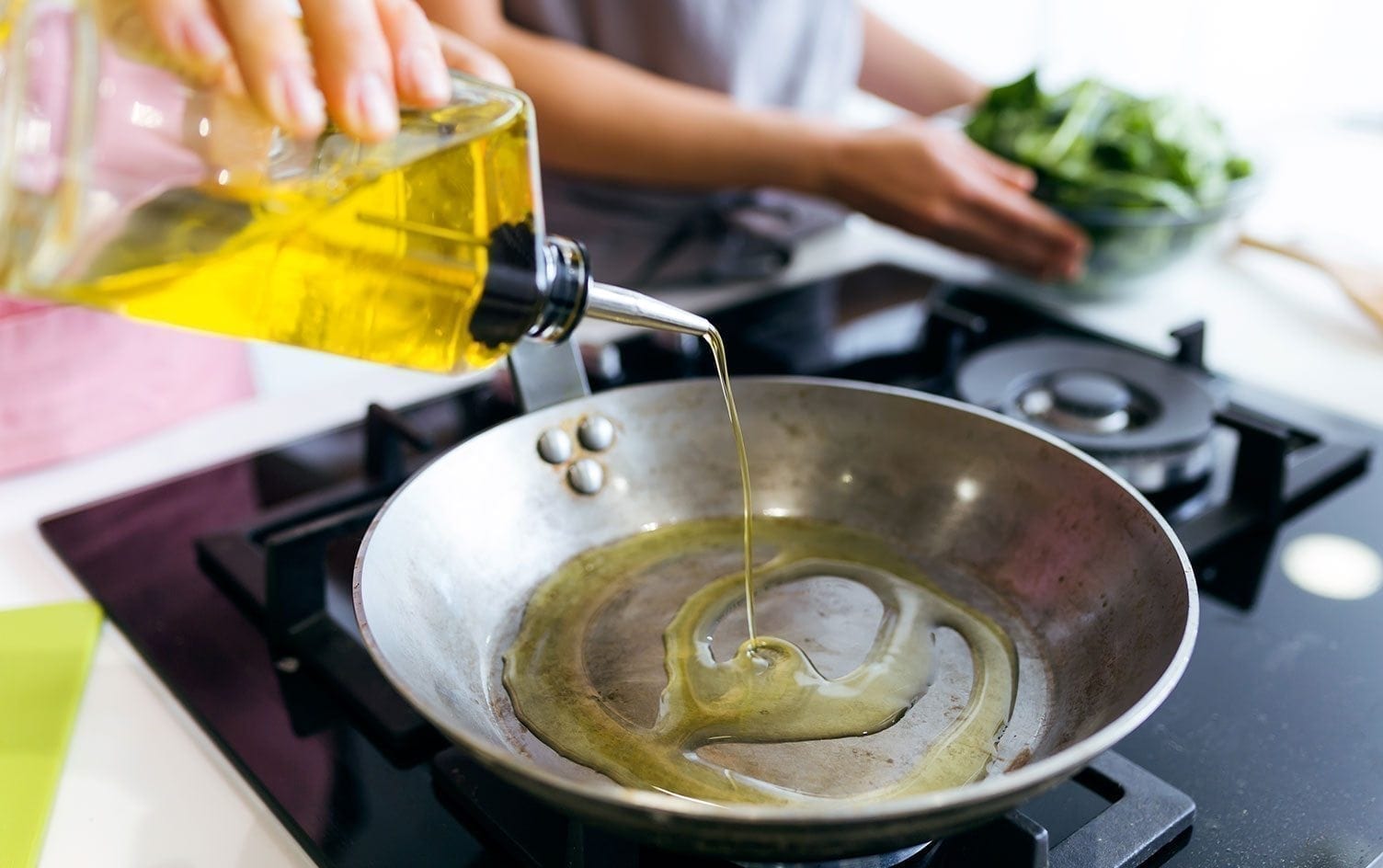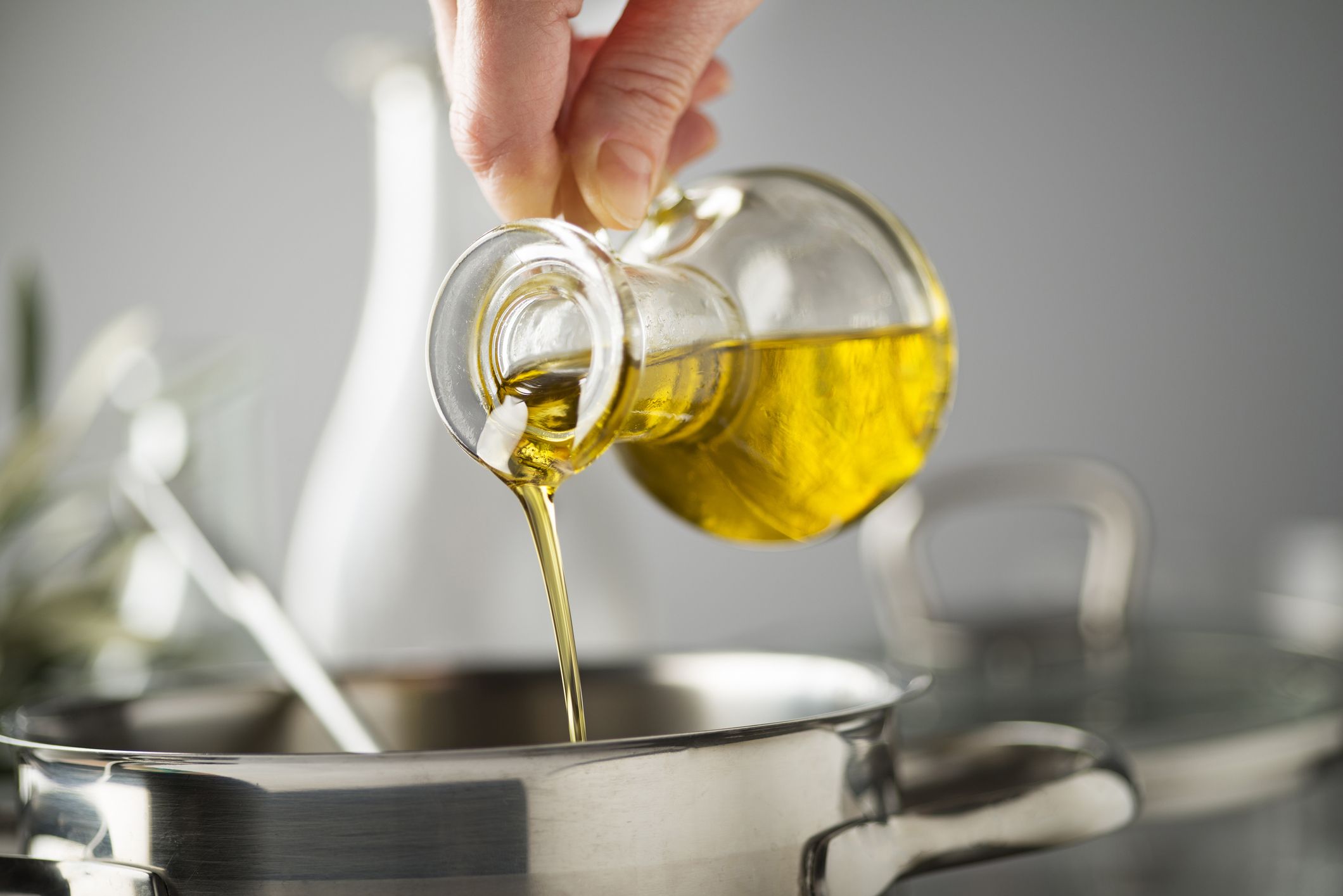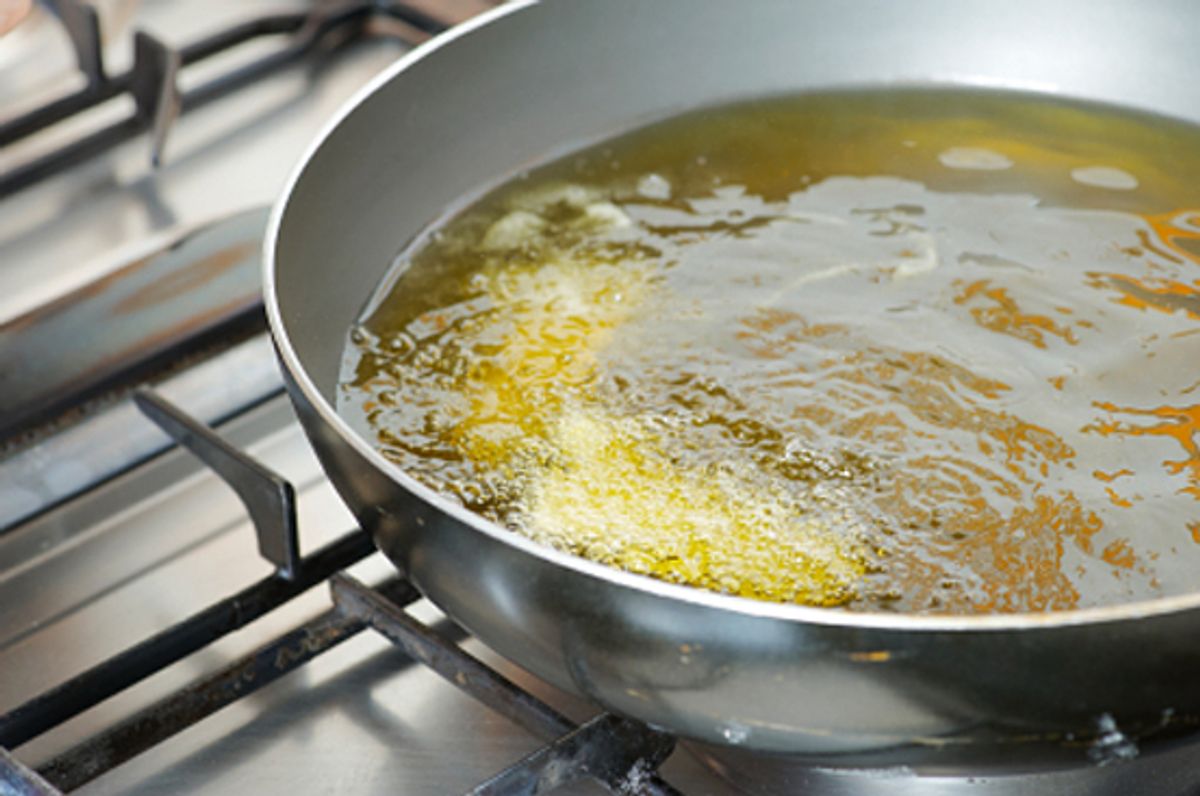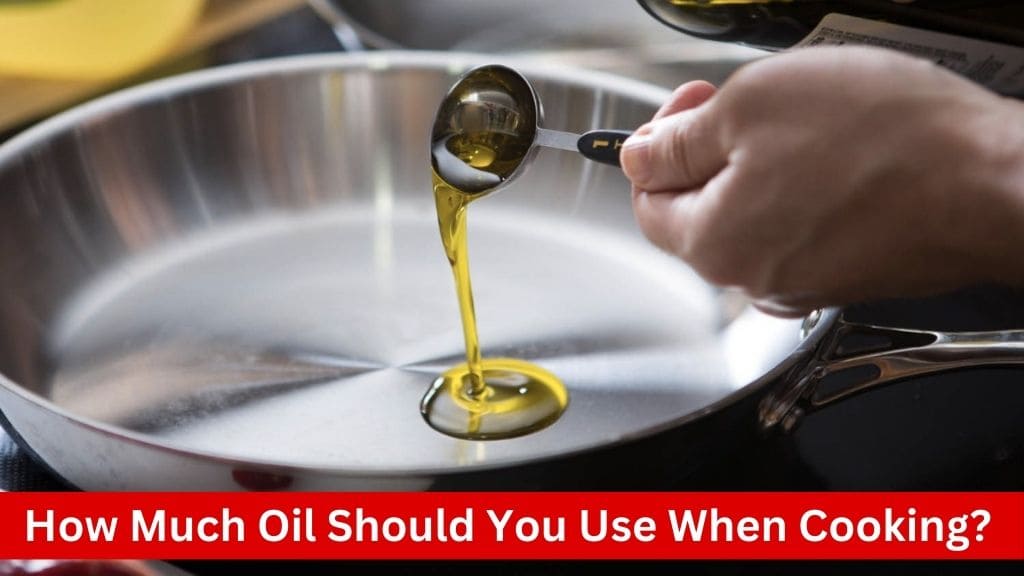Cooking oil is a fundamental ingredient in many culinary creations, adding flavor, texture, and moisture to dishes. However, determining the right amount of oil to use can be crucial for achieving the perfect balance of flavor and healthiness in your cooking. In this comprehensive guide, we’ll explore the factors influencing the quantity of cooking oil needed for various cooking methods and provide practical tips for optimizing your oil usage.
Understanding Cooking Oil Basics

Types of Cooking Oil
Vegetable Oil: This broad category encompasses oils derived from various plant sources, such as soybeans, corn, canola, and sunflower seeds. Vegetable oil is often labeled as “vegetable oil blend” and has a neutral flavor, making it versatile for a wide range of cooking applications.
Olive Oil: Olive oil, a staple of Mediterranean cuisine, is extracted from olives and comes in several varieties, including extra virgin, virgin, and refined. Extra virgin olive oil is prized for its robust flavor, fruity aroma, and health benefits, as it is cold-pressed from the first pressing of olives. Virgin olive oil undergoes minimal processing and retains some of the flavor and nutrients of the olives. Refined olive oil, on the other hand, is processed using heat and chemical solvents to remove impurities and has a milder flavor.
Coconut Oil: Extracted from the meat of mature coconuts, coconut oil is solid at room temperature and has a distinct tropical aroma and flavor. It is rich in saturated fats, particularly medium-chain triglycerides (MCTs), which are believed to offer various health benefits. Coconut oil is commonly used in baking, frying, and sautéing.
Avocado Oil: Avocado oil is pressed from the pulp of ripe avocados and is prized for its mild flavor and high smoke point. It is rich in monounsaturated fats, particularly oleic acid, which is associated with heart health. Avocado oil is versatile for both high-heat cooking and cold applications, such as salad dressings and dips.
Smoke Point
The smoke point of an oil refers to the temperature at which it begins to smoke and decompose, leading to the formation of harmful compounds such as acrolein and acrylamide. Cooking oils with higher smoke points are suitable for high-heat cooking methods such as frying and searing, while oils with lower smoke points are best reserved for light sautéing, baking, or salad dressings.
For example, refined oils like canola, soybean, and peanut oil have higher smoke points, making them suitable for frying and deep-frying at high temperatures. In contrast, unrefined oils like extra virgin olive oil and flaxseed oil have lower smoke points and are better suited for gentle cooking methods or as finishing oils.
Health Considerations

While cooking oil adds flavor and richness to dishes, it’s essential to consider its impact on health. The type and quantity of fats present in cooking oil can influence cardiovascular health, inflammation, and oxidative stress. Here are some key points to consider:
- Saturated Fats: Oils high in saturated fats, such as coconut oil and palm oil, have been associated with an increased risk of heart disease when consumed in excess. However, recent research suggests that the type of saturated fats and overall dietary pattern may play a more significant role in cardiovascular health.
- Monounsaturated Fats: Oils rich in monounsaturated fats, such as olive oil and avocado oil, are considered heart-healthy fats that may help reduce LDL cholesterol levels and inflammation when consumed as part of a balanced diet.
- Polyunsaturated Fats: Oils high in polyunsaturated fats, such as soybean oil, corn oil, and sunflower oil, contain essential fatty acids, such as omega-6 and omega-3 fatty acids, which are vital for brain function, heart health, and inflammation regulation. However, an imbalance of omega-6 to omega-3 fatty acids may contribute to inflammation and chronic disease.
- Trans Fats: Artificial trans fats, commonly found in partially hydrogenated oils used in processed foods, have been linked to an increased risk of heart disease and should be avoided. Many countries have implemented regulations to limit or ban the use of trans fats in food products.
Factors Influencing Oil Usage

Cooking Method
The cooking method you choose significantly impacts the amount of oil required. Different cooking techniques require varying amounts of oil to achieve optimal results:
- Frying: Deep-frying and pan-frying typically require a generous amount of oil to submerge or coat the food evenly and achieve crispy, golden-brown results. The volume of oil needed depends on the size of the frying vessel and the type of food being fried.
- Sautéing: Sautéing involves cooking food quickly in a shallow pan with a small amount of oil over medium to high heat. The oil serves to prevent sticking and facilitate even browning of the ingredients. While sautéing requires less oil than frying, it’s essential to use enough to coat the bottom of the pan and create a thin film for cooking.
- Baking: Baking recipes often specify the amount of oil required to achieve the desired texture, moisture, and richness in the final product. Oils such as vegetable oil, olive oil, or melted butter may be used in baking to add moisture, enhance flavor, and contribute to the tender crumb of cakes, muffins, and quick breads.
Type of Dish
The type of dish you’re preparing also influences the amount of oil needed. Consider the following factors:
- Protein-based Dishes: Meat, poultry, seafood, and tofu may require additional oil for marinating, basting, or searing to enhance flavor, prevent sticking, and promote caramelization. The amount of oil used in marinades and sauces varies based on the recipe’s flavor profile and cooking method.
- Vegetable-based Dishes: Vegetables typically require less oil for cooking, as they release moisture during the cooking process and can be seasoned with herbs, spices, and aromatics for flavor. Stir-frying, roasting, and grilling vegetables with a minimal amount of oil help retain their natural sweetness, texture, and nutrients.
Personal Preference

Your personal taste preferences and dietary considerations play a crucial role in determining the amount of oil used in your cooking. Consider the following factors:
- Texture and Mouthfeel: Some individuals prefer dishes with a lighter, less oily texture, while others enjoy the richness and depth of flavor that comes from generous use of oil. Adjust the amount of oil used in recipes to achieve the desired texture and mouthfeel.
- Health Consciousness: If you’re mindful of your fat intake or following a specific dietary plan, you may opt to reduce the amount of oil used in cooking or choose healthier oil options such as olive oil, avocado oil, or grapeseed oil. Experiment with different oils and cooking techniques to find the balance between flavor and healthiness.
Recipe Guidelines
Many recipes provide specific instructions regarding the amount of oil needed for optimal results. Follow these guidelines as a starting point, but feel free to adjust the quantity of oil based on your preferences and cooking experience. Keep in mind that cooking is both an art and a science, and experimentation is part of the culinary journey.
Culinary Expertise
As you gain experience and confidence in the kitchen, you’ll develop a better intuition for oil usage in your cooking. Pay attention to the visual cues, aroma, and taste of your dishes to gauge whether you’ve used the right amount of oil. Over time, you’ll develop a keen sense of balance and proportion in your cooking.
Practical Tips for Using Cooking Oil

Measure Carefully
Accurate measurement of cooking oil is crucial for achieving consistent results in your recipes. Use measuring spoons or a kitchen scale to measure the precise amount of oil required. This ensures that you neither skimp on oil, leading to dry or undercooked dishes, nor use excess oil, resulting in greasy or soggy outcomes.
Use Cooking Spray
Cooking sprays are a convenient and efficient way to apply a thin, even layer of oil to cooking surfaces without excess dripping or pooling. Look for non-stick cooking sprays made from natural ingredients, such as olive oil or coconut oil, for healthier options. Cooking sprays are particularly useful for coating baking pans, grilling surfaces, and sautéing vegetables with minimal oil.
Experiment with Substitutions
Explore alternative ingredients and cooking techniques that allow you to reduce the amount of oil in your recipes without compromising flavor or texture. For example, you can replace some or all of the oil in baking recipes with applesauce, mashed bananas, or yogurt to add moisture and richness while reducing fat content. In savory dishes, consider using broth, wine, or citrus juice as a flavorful substitute for oil in marinades, dressings, and sautés.
Incorporate Flavorful Ingredients
Enhance the flavor of your dishes with aromatic ingredients such as fresh herbs, spices, garlic, onions, and citrus zest. These ingredients add depth and complexity to your dishes, allowing you to reduce the amount of oil needed without sacrificing flavor. Experiment with different flavor combinations to create exciting and satisfying meals that appeal to your palate.
Consider Healthier Cooking Methods
Opt for healthier cooking methods that require less oil, such as grilling, steaming, roasting, and broiling. These methods help retain the natural flavors and nutrients of the ingredients while minimizing the need for added fats. For example, instead of frying foods in oil, try grilling or broiling them for a delicious and nutritious alternative. Steaming vegetables preserves their vibrant color, crisp texture, and nutrient content without the need for oil.
Monitor Heat Levels
Maintain proper heat control when cooking with oil to prevent overheating and burning, which can degrade the quality of the oil and produce unpleasant flavors. Use a thermometer to monitor the temperature of the oil when frying, ensuring that it reaches the desired temperature without smoking or burning. Adjust the heat as needed to maintain a steady temperature throughout the cooking process, allowing the food to cook evenly and develop a golden-brown crust.
Store Properly
Store cooking oil in a cool, dark place away from heat sources and sunlight to prevent oxidation and rancidity. Choose opaque or dark-colored bottles to protect the oil from light exposure, which can accelerate spoilage. Keep the oil tightly sealed to minimize air exposure and extend its shelf life. Check the expiration date on the oil bottle and discard any oil that has passed its prime or developed off flavors and odors.
Conclusion
Finding the right balance of cooking oil in your recipes is essential for achieving delicious and nutritious meals. By understanding the factors influencing oil usage and implementing practical tips for optimization, you can enhance the flavor and healthiness of your culinary creations. Experiment with different types of oil, cooking methods, and flavor combinations to discover your perfect oil-to-ingredient ratio and elevate your cooking to new heights. Happy cooking!


